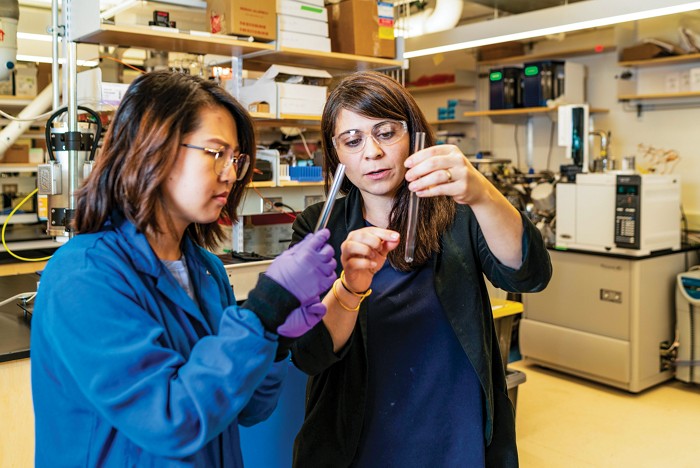News
Nikki defends her thesis
Nikki defends her thesis titled "Chemical exposures in drinking water: contaminant analysis and physicochemical behavior." Congratulations, Nikki!
Omar defends his thesis
Omar defends his thesis titled "Abiotic and Biotic Polymer Degradation to Inform Sustainable Design." Congratulations, Omar!
Glen's work published on Environmental Science Processes & Impacts
Glen's work published on Environmental Science Processes & Impacts, titled "Mitigating matrix effects in oil and gas wastewater analysis: LC-MS/MS method for ethanolamines". The high salinity and organic content in oil and gas wastewaters can cause ion suppression during liquid chromatography mass spectrometry (LC/MS) analysis, diminishing the sensitivity and accuracy of measurements in available methods. This suppression is severe for low molecular weight organic compounds such as ethanolamines (e.g., monoethanolamine (MEA), diethanolamine (DEA), triethanolamine (TEA), N-methyldiethanolamine (MDEA), and N,N-ethyldiethanolamine (EDEA)). Here, we deployed solid phase extraction (SPE), mixed-mode LC, triple quadrupole MS with positive electrospray ionization (ESI), and a suite of stable isotope standards (i.e., one per target compound) to correct for ion suppression by salts and organic matter, SPE losses, and instrument variability. The method was evaluated in produced water samples from Italy (NaCl salinity from 8110–18[thin space (1/6-em)]100 mg L−1; diesel range organic compounds ranging from 5.1–7.9 mg L−1). After correcting for matrix effects, ethanolamines in produced water samples were quantified. The first batch of samples (March 2019) had 37–646 μg L−1 total ethanolamines. The second batch of samples (September 2019) had greater ethanolamine content of 77–3976 μg L−1 which was attributed to a reduced water cut during oil production, enhancing the proportionate abundance of these compounds in the aqueous phase. In all samples, DEA and MEA were the dominant ethanolamine species. Possible sources (e.g., corrosion inhibitor and biotransformation) and natural attenuation potential during storage (e.g., at different temperatures, acidification, and addition of sodium azide) were investigated. The developed analytical method enables further investigation of the fate of low molecular weight organic additives in oil and gas development and provides an enhanced ability to evaluate risks associated with chemical release to the environment.
Congratulations to Glen and Desirée!
Nicolette's work published on Environmental Science Processes & Impacts
Nicolette's work published on Environmental Science Processes & Impacts, titled "Domestic groundwater wells in Appalachia show evidence of low-dose, complex mixtures of legacy pollutant". Lack of water quality data for private drinking water sources prevents robust evaluation of exposure risk for communities co-located with historically contaminated sites and ongoing industrial activity. Areas of the Appalachian region of the United States (i.e., Pennsylvania, Ohio and West Virginia) contain extensive hydraulic fracturing activity, as well as other extractive and industrial technologies, in close proximity to communities reliant on private drinking water sources, creating concern over potential groundwater contamination. In this study, we characterized volatile organic compound (VOC) occurrence at 307 private groundwater well sites within Pennsylvania, Ohio, and West Virginia. The majority (97%) of water samples contained at least one VOC, while the average number of VOCs detected at a given site was 5 ± 3. The majority of individual VOC concentrations fell below applicable U.S. Environmental Protection Agency (EPA) Maximum Contamination Levels (MCLs), except for chloroform (MCL of 80 μg L−1; n = 1 at 98 μg L−1), 1,2-dibromoethane (MCL of 0.05 μg L−1; n = 3 ranging from 0.05 to 0.35 μg L−1), and 1,2-dibromo-3-chloropropane (MCL of 0.2 μg L−1; n = 7 ranging from 0.20 to 0.58 μg L−1). To evaluate well susceptibility to VOCs from industrial activity, distance to hydraulic fracturing site was used to assess correlations with contaminant occurrences. Proximity to closest hydraulic fracturing well-site revealed no statistically significant linear relationships with either individual VOC concentrations, or frequency of VOC detections. Evaluation of other known industrial contamination sites (e.g., US EPA Superfund sites) revealed elevated levels of three VOCs (chloroform, toluene, benzene) in groundwaters within 10 km of those Superfund sites in West Virginia and Ohio, illuminating possible point source influence. Lack of correlation between VOC concentrations and proximity to specific point sources indicates complex geochemical processes governing trace VOC contamination of private drinking water sources. While individual concentrations of VOCs fell well below recommended human health levels, the low dose exposure to multiple VOCs occurring in drinking supplies for Appalachian communities was noted, highlighting the importance of groundwater well monitoring.
Congratulations to Nicolette and Desirée!
Vittorio's work published on Environmental Science & Technology
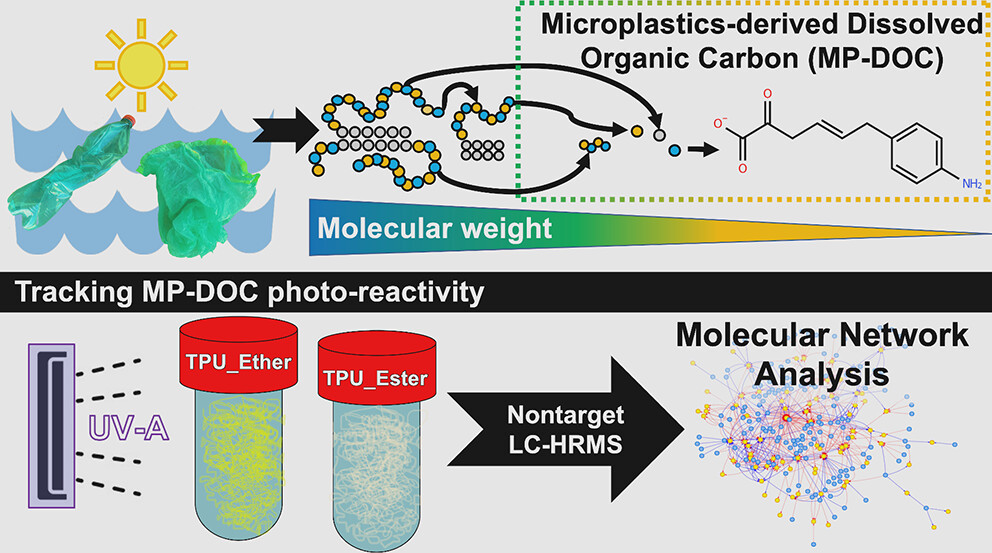
Vittorio's work published on Environmental Science & Technology, titled "Tracking Dynamic Chemical Reactivity Networks with High-Resolution Mass Spectrometry: A Case of Microplastic-Derived Dissolved Organic Carbon". Chemical degradation testing often involves monitoring the loss of a chemical or the evolution of a single diagnostic product through time. Here, we demonstrate a novel approach to tracing complex degradation networks using mass-spectrometry-based methods and open cheminformatics tools. Ester- and ether-based thermoplastic polyurethane (TPU_Ester and TPU_Ether) microplastics (350 μm) and microplastics-derived dissolved organic carbon (MP-DOC) were photoweathered in a simulated marine environment and subsequently analyzed by liquid chromatography coupled to high-resolution mass spectrometry. We formula-annotated 1342 and 2344 unique features in the MP-DOC of TPU_Ester and TPU_Ether, respectively. From these, we extracted 199 and 568 plausible parent–transformation product pairs via matching of features (a) with complementary increasing and decreasing trends (Spearman’s correlation coefficient between normalized intensity and time), (b) spectral similarities of at least three accurate mass MS2 fragments, and (c) at least 3 ppm agreement between the theoretical and measured change in m/z between the parent–transformation product formula. Molecular network analysis revealed that both chain scission and cross-linking reactions occur dynamically rather than degradation proceeding in a monotonic progression to smaller or more oxygenated structures. Network nodes with the highest degree of centrality were tentatively identified using in silico fragmentation and can be prioritized for toxicity screening or other physicochemical properties of interest. This work has important implications for chemical transformation tracking in complex mixtures and may someday enable improved elucidation of environmental transformation rules (i.e., structure–reactivity relationships) and fate modeling.
Congratulations to Vittorio, and Desiree!
Kristen wins Mathworks Fellowship
Congratulations, Kristen!
Audrey receives NSF Graduate Research Fellowship
Congratulations, Audrey!
Marc wins 3rd place award for his presentation at BASF North American Research Alliance meeting
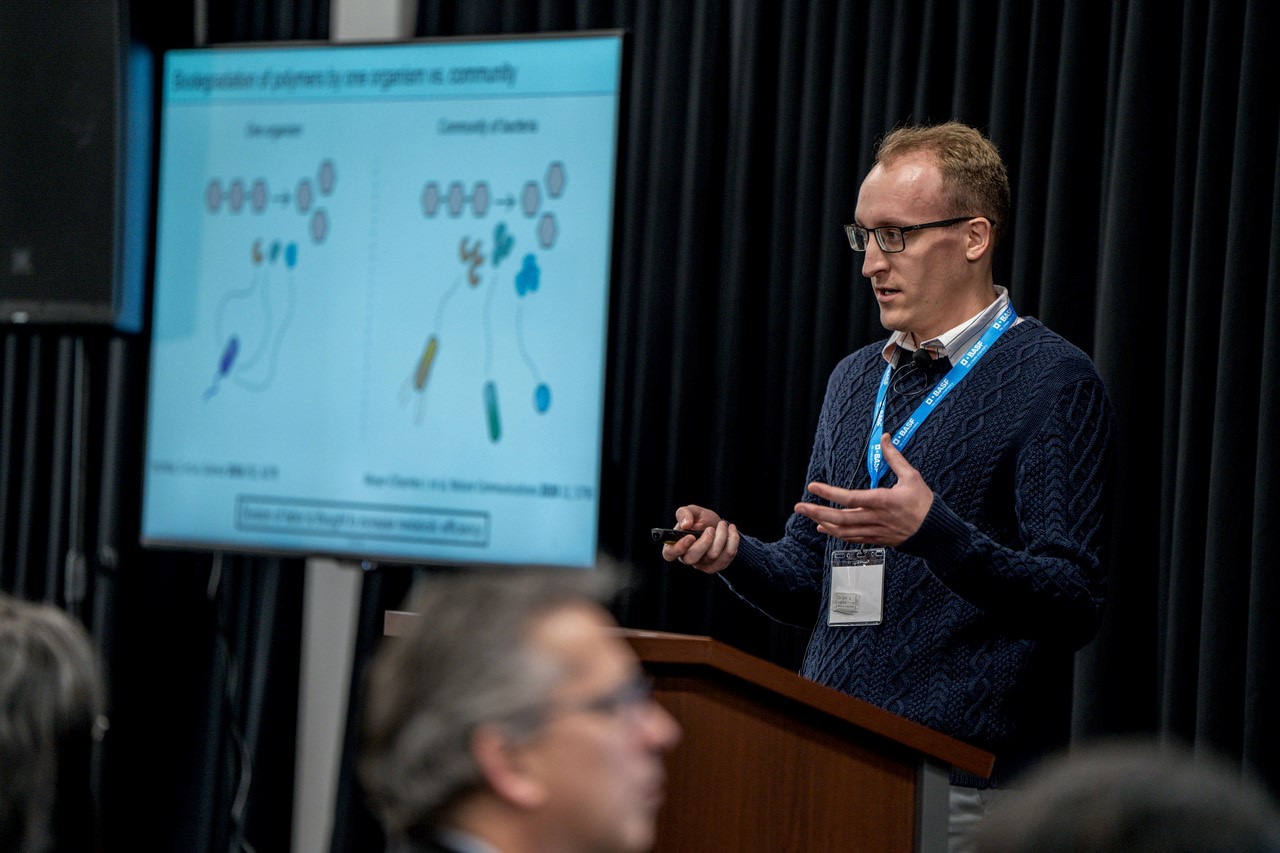
Congratulations to Marc!
Nicolette Bugher featured in National Institute of Environmental Health Sciences newsletter

See the spotlight on the NIEHS Website
Congratulations to Nikki!
Vittorio's work published on Environmental Science & Technology

Vittorio's work published on Environmental Science & Technology, titled "Tracking Dynamic Chemical Reactivity Networks with High-Resolution Mass Spectrometry: A Case of Microplastic-Derived Dissolved Organic Carbon". Chemical degradation testing often involves monitoring the loss of a chemical or the evolution of a single diagnostic product through time. Here, we demonstrate a novel approach to tracing complex degradation networks using mass-spectrometry-based methods and open cheminformatics tools. Ester- and ether-based thermoplastic polyurethane (TPU_Ester and TPU_Ether) microplastics (350 μm) and microplastics-derived dissolved organic carbon (MP-DOC) were photoweathered in a simulated marine environment and subsequently analyzed by liquid chromatography coupled to high-resolution mass spectrometry. We formula-annotated 1342 and 2344 unique features in the MP-DOC of TPU_Ester and TPU_Ether, respectively. From these, we extracted 199 and 568 plausible parent–transformation product pairs via matching of features (a) with complementary increasing and decreasing trends (Spearman’s correlation coefficient between normalized intensity and time), (b) spectral similarities of at least three accurate mass MS2 fragments, and (c) at least 3 ppm agreement between the theoretical and measured change in m/z between the parent–transformation product formula. Molecular network analysis revealed that both chain scission and cross-linking reactions occur dynamically rather than degradation proceeding in a monotonic progression to smaller or more oxygenated structures. Network nodes with the highest degree of centrality were tentatively identified using in silico fragmentation and can be prioritized for toxicity screening or other physicochemical properties of interest. This work has important implications for chemical transformation tracking in complex mixtures and may someday enable improved elucidation of environmental transformation rules (i.e., structure–reactivity relationships) and fate modeling.
Congratulations to Vittorio and Desiree!
Nicolette Bugher wins award for best poster at SRP Annual Meeting
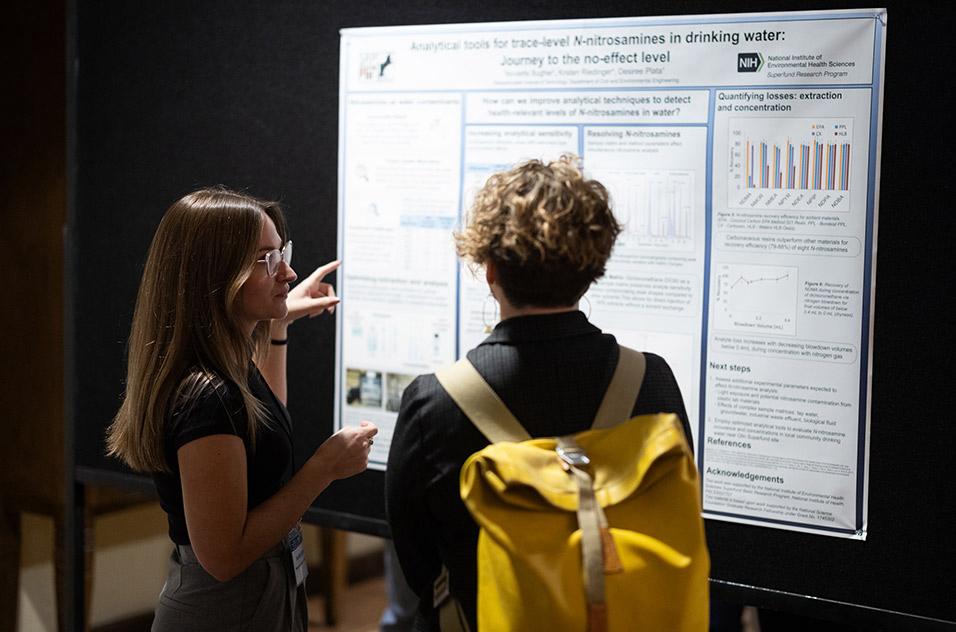
Congratulations to Nikki!
Yunpo's work published on Environmental Science & Technology
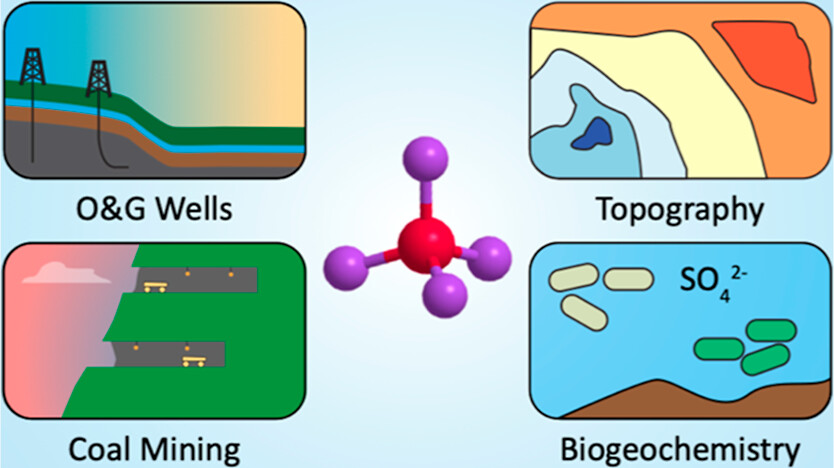
Yunpo's work published on Environmental Science & Technology, titled "Conventional Fossil Fuel Extraction, Associated Biogeochemical Processes, and Topography Influence Methane Groundwater Concentrations in Appalachia". The production of fossil fuels, including oil, gas, and coal, retains a dominant share in US energy production and serves as a major anthropogenic source of methane, a greenhouse gas with a high warming potential. In addition to directly emitting methane into the air, fossil fuel production can release methane into groundwater, and that methane may eventually reach the atmosphere. In this study, we collected 311 water samples from an unconventional oil and gas (UOG) production region in Pennsylvania and an oil and gas (O&G) and coal production region across Ohio and West Virginia. Methane concentration was negatively correlated to distance to the nearest O&G well in the second region, but such a correlation was shown to be driven by topography as a confounding variable. Furthermore, sulfate concentration was negatively correlated with methane concentration and with distance to coal mining in the second region, and these correlations were robust even when considering topography. We hypothesized that coal mining enriched sulfate in groundwater, which in turn inhibited methanogenesis and enhanced microbial methane oxidation. Thus, this study highlights the complex interplay of multiple factors in shaping groundwater methane concentrations, including biogeochemical conversion, topography, and conventional fossil extraction.
Congratulations to Yunpo, and Desiree!
Yunpo successfully defends his doctoral dissertation!
Congratulations, Dr. Yunpo Li!.
Desiree featured in MIT News
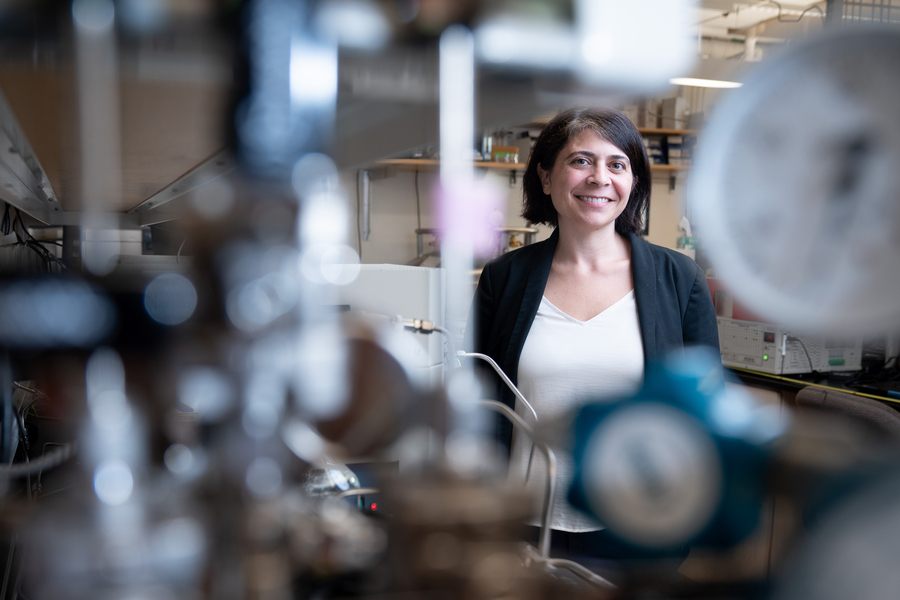
Photo credit: Brice Vickmark
Vittorio appointed as Assistant Professor and Manager of the Human and Environmental Exposure Assessment Lab at NYU Grossman School of Medicine
Congratulations, Vittorio!
.Professor Urs von Gunten visits the Plata Lab

Cultivating knowledge and connections: A privileged opportunity to share ideas and expertise during a Plata Lab group lunch with Prof. Urs von Gunten (head of the laboratory for Water Quality and Treatment at EPFL and the drinking water chemistry group at Eawag, Switzerland). Engaging discussions, lab tour, and focused project meetings marked an enriching day of collaboration and cross-disciplinary conversations.
Desiree featured in MIT Energy Initiative's Energy Futures for methane abatement work
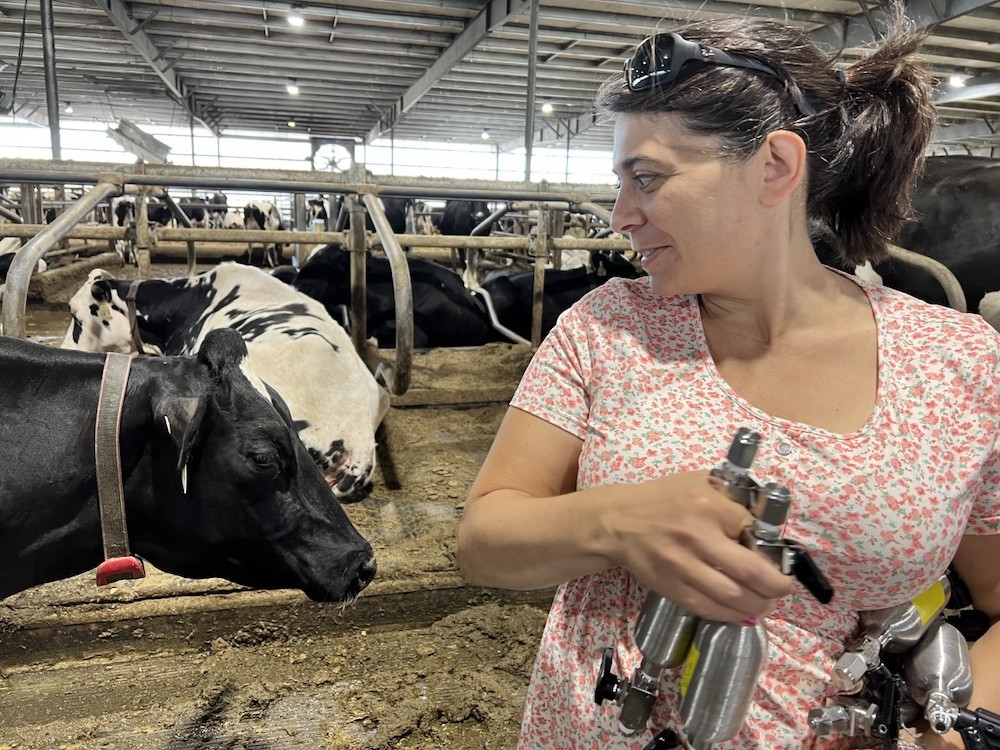
Photo credit: Rebecca Brenneis
Omar wins both the Martin Family Fellowship and the Hugh Hampton Young Fellowship!
Congratulations, Omar! Read more about the fellowships linked here: Martin Family Fellowship and Hugh Hampton Young Fellowship.
Elijah receives NSF Graduate Research Fellowship
Congratulations, Elijah! Read about the award in the feature by MIT CEE News titled, "MIT Civil and Environmental Engineering students awarded NSF Graduate Research Fellowships".
TEDxBoston publishes Desiree's talks from this past November
See the videos titled "How to Change the Rate of Global Warming in our Lifetimes" and "Design for Degradation: Or Bust".
MIT CEE News highlights Mollie's work
See the story on CEE News, titled "Mollie Wilkinson: Graduate Spotlight".
MIT CEE News story about Nth Cycle highlights Megan and Desiree's journey as founders
See the story on CEE News, titled "From PhD dissertations to startups, CEOs with connections to CEE spun their research into practice".
MIT News posts MIT-WHOI Joint Program video featuring Desiree and Marc
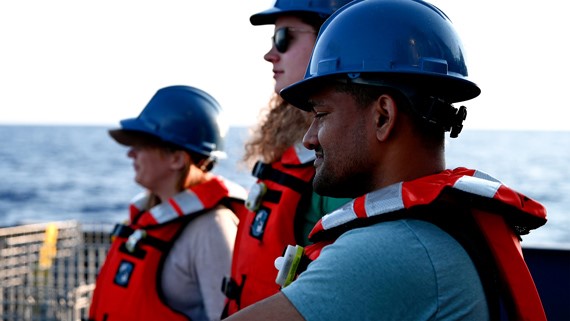
See the video on MIT News, titled "Investigating Our Blue Ocean Planet".
Since 1968, the MIT-WHOI Joint Program has provided research and educational opportunities for PhD students seeking to explore the marine world.
Alexis Hocken of the Olsen group and a Plata lab collaborator featured on MIT News for her work on "small format" plastic recycling
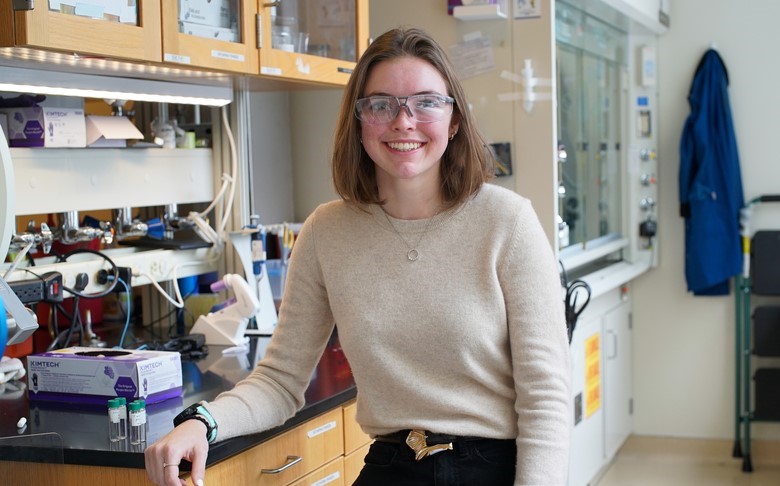
See the rest of the story on MIT News, titled "Rescuing small plastics from the waste stream".
Photo credit: Melanie Gonick
Michael, Eric and Wenbo's work published on ACS Nanoscience Au
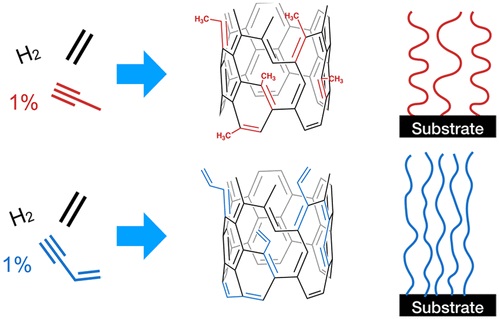
Michael, Eric and Wenbo's work published on ACS Nanoscience Au, titled "Modifying the Molecular Structure of Carbon Nanotubes through Gas-Phase Reactants".Current approaches to carbon nanotube (CNT) synthesis are limited in their ability to control the placement of atoms on the surface of nanotubes. Some of this limitation stems from a lack of understanding of the chemical bond-building mechanisms at play in CNT growth. Here, we provide experimental evidence that supports an alkyne polymerization pathway in which short-chained alkynes directly incorporate into the CNT lattice during growth, partially retaining their side groups and influencing CNT morphology. Using acetylene, methyl acetylene, and vinyl acetylene as feedstock gases, unique morphological differences were observed. Interwall spacing, a highly conserved value in natural graphitic materials, varied to accommodate side groups, increasing systematically from acetylene to methyl acetylene to vinyl acetylene. Furthermore, attenuated total reflectance Fourier-transfer infrared spectroscopy (ATR-FTIR) illustrated the existence of intact methyl groups in the multiwalled CNTs derived from methyl acetylene. Finally, the nanoscale alignment of the CNTs grown in vertically aligned forests differed systematically. Methyl acetylene induced the most tortuous growth while CNTs from acetylene and vinyl-acetylene were more aligned, presumably due to the presence of polymerizable unsaturated bonds in the structure. These results demonstrate that feedstock hydrocarbons can alter the atomic-scale structure of CNTs, which in turn can affect properties on larger scales. This information could be leveraged to create more chemically and structurally complex CNT structures, enable more sustainable chemical pathways by avoiding the need for solvents and postreaction modifications, and potentially unlock experimental routes to a host of higher-order carbonaceous nanomaterials.
Congratulations to Michael, Eric, Wenbo, and Desiree!!
Vittorio's work published on Environmental Science: Processes & Impacts
Vittorio's work published on Environmental Science: Processes & Impacts, titled "Photochemical weathering of polyurethane microplastics produced complex and dynamic mixtures of dissolved organic chemicals".Sunlight exposure can naturally mitigate microplastics pollution in the surface ocean, however it results in emissions of dissolved organic carbon (DOC) whose characteristics and fate remain largely unknown. In this work, we investigated the effects of solar radiation on polyether (TPU_Ether) and polyester (TPU_Ester) thermoplastic polyurethane, and on a thermoset polyurethane (PU_Hardened). The DOC released to the aqueous phase was quantified by total organic carbon analysis and characterized by nontarget liquid chromatography coupled to high-resolution mass spectrometry. Polyurethane microplastics were degraded following mechanisms reconcilable with UV photo-oxidation. Roughly three thousand unique by-products were released from photo-weathered TPUs, whereas 540 were detected in the DOC of PU_Hardened. This carbon pool was highly complex and dynamic in terms of physicochemical properties and susceptibility to further photodegradation after dissolution from the particles. Our results show that plastics photodegradation in the ocean requires chemical assessment of the DOC emissions in addition to the analysis of aged microplastics and that polymer chemistry influences the chain scission products.
Congratulations to Vittorio and Desiree!!
Nikki featured in MIT Technology Review

Photo credit: Jake Belcher
“It’s important that we’re able to take an environmental sample and say, ‘What’s in this?’”.
Joseph recognized as part of the inaugural cohort of MIT Postdoctoral Engineering Excellence Fellows in the MIT News
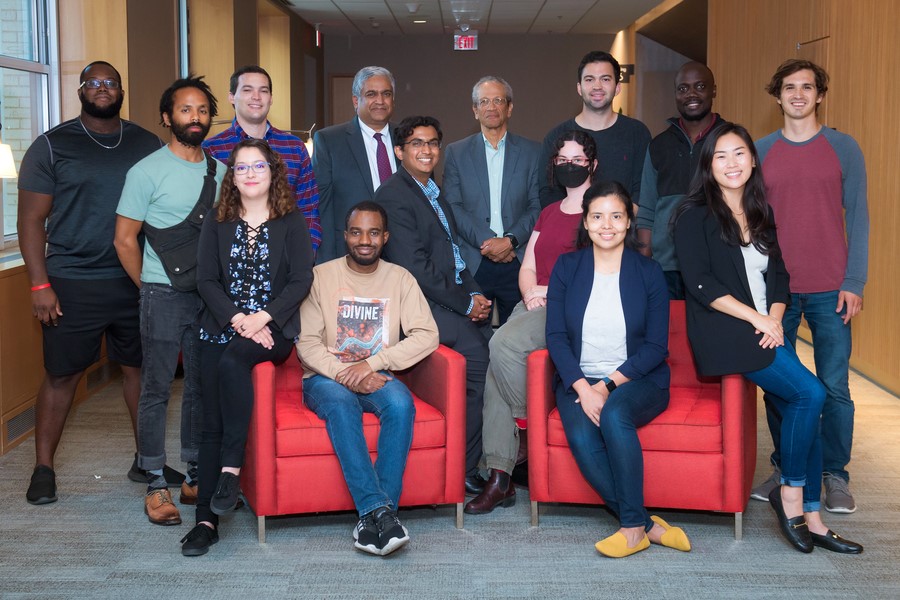
Back row, from left to right: Timothy Holder, George Moore, Jorge Méndez, Dean Anantha Chandrakasan, Associate Dean Daniel Hastings, Matthew Rivera, Joseph Wasswa, and Steven Ceron. Front and middle rows, seated, from left to right: Maria Ramos Gonzalez, Michael Kitcher, Suhas Eswarappa Prameela, Molly Carton, Sofia Arevalo, and Ulri Lee. Not Pictured Matthew Clarke, Amy Fox, Kristina Monakhova, and Kimia Nadjahi. Photo: Grechen Ertl
"The program offers annual stipends for postdocs to pursue research and educational efforts that widen the scope and breadth of the school’s current work, while maintaining its commitment to excellence in engineering." See the story here.
Omar's work to advocate for first-generation graduate students highlighted in MIT News

(Top row) Kimberly Bennett, Diana Grass, and Bianca Lepe. (Bottom row) Anthony Meza, Omar Tantawi, and Richard Van.
MIT Startup Exchange features Nth Cycle
Dr. Megan O'Conner, CEO of Nth Cycle
The MIT Startup Exchange featured Nth Cycle and Plata Lab alum, Dr. Megan O'Connor CEO and co-founder in an article titled "A Cleaner Way to Recycle Batteries". The article discusses both the application of the electro-extraction technology to battery recycling and the economic opportunity Nth Cycle is uniquely positioned to capitalize on.
Elijah selected to inaugural cohort of MIT Morningside Academy for Design fellows

(Top row) S. Agrawal, J. Bessette, J. Brazier, A. Crease, G. Goldstein; (Middle) K. Gordon, E. Martin, M. N'Diaye, AJ Perez, P. Reynolds-Cuéllar; (Bottom) F. Riccio-Ackerman, J. Saadi, N. Singhasaneh, and J. Zong. Courtesy MIT (PHOTO: MIT Morningside Academy for Design )
See the rest of the story at MIT News, in an article titled "Developing community around design".
Eric successfully defends his doctoral disertation!
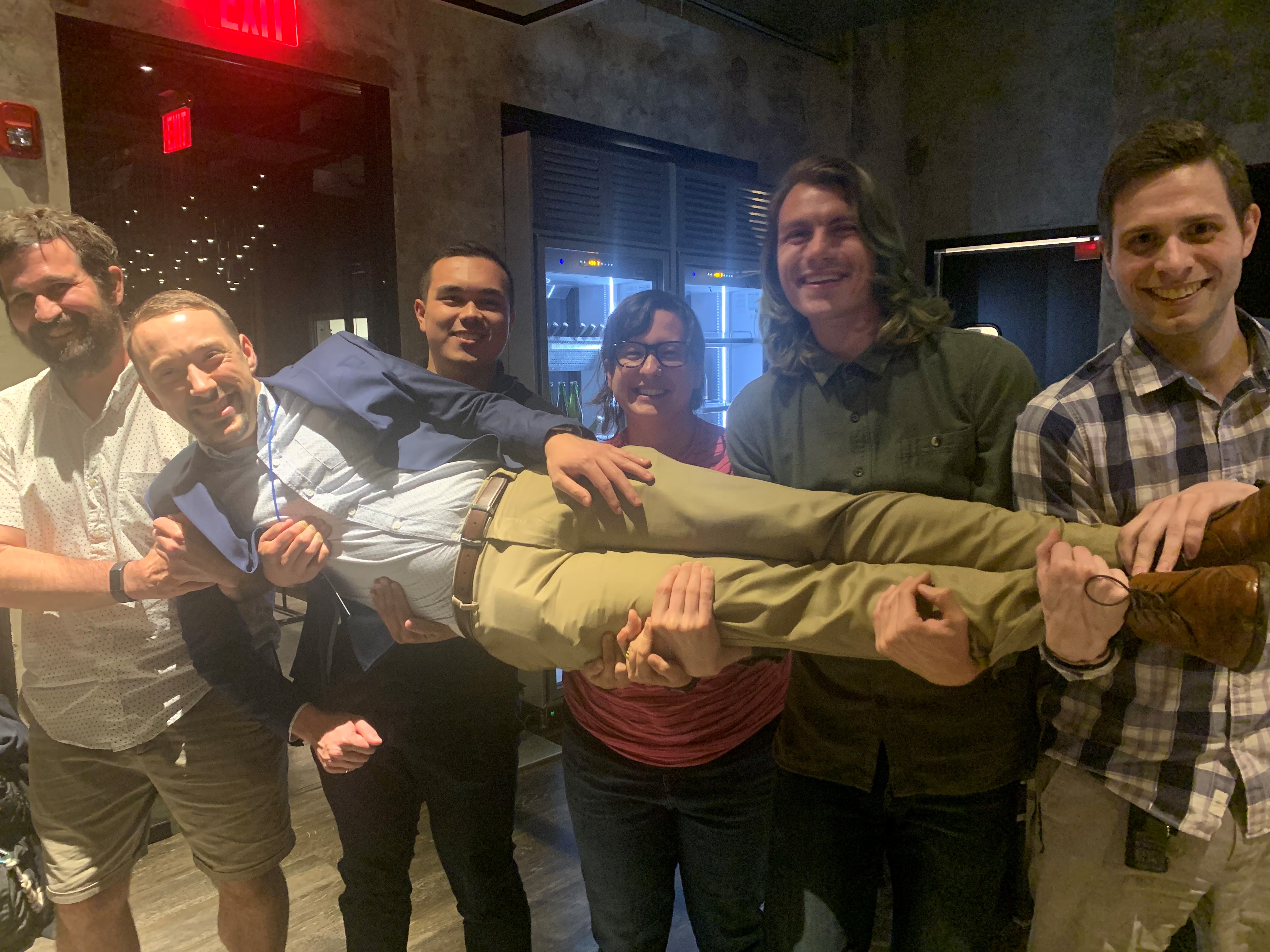
Congratulations, Dr. Eric Johnson!.
Plata Lab's work on copper zeolite for methane removal is in The Wall Street Journal

Desiree and Rebecca show the catalyst material for methane removal. (PHOTO: RYAN DEZEMBER/THE WALL STREET JOURNAL)
Doctoral student Rebecca Brenneis' work on removing methane from air using a copper zeolite catalyst is featured in an article in The Wall Street Journal, titled "Cat Litter Could Be Antidote for Climate Change, Researchers Say". Briefly speaking, the catalyst material is made by soaking an odor-eating clay (zeolite) used in cat boxes in a copper solution. The material snatches methane from passing air and turns it into carbon dioxide, a much less harmful greenhouse gas. The Energy Department gave the researchers $2 million to design devices with the material that can be attached to vents at coal mines and dairy barns, which are big methane emitters. Basically, the idea is to alter the chemistry of emissions before they hit the open air, like a catalytic converter on a car. In the end, the work has the potential to greatly reduce the amount of methane in the atmosphere and slow warming temperatures on the planet. It could also create another possible application for zeolite, a clay used to clean up some of humankind’s nastiest messes.
Desiree's collaboration paper published on Current Environmental Health Reports
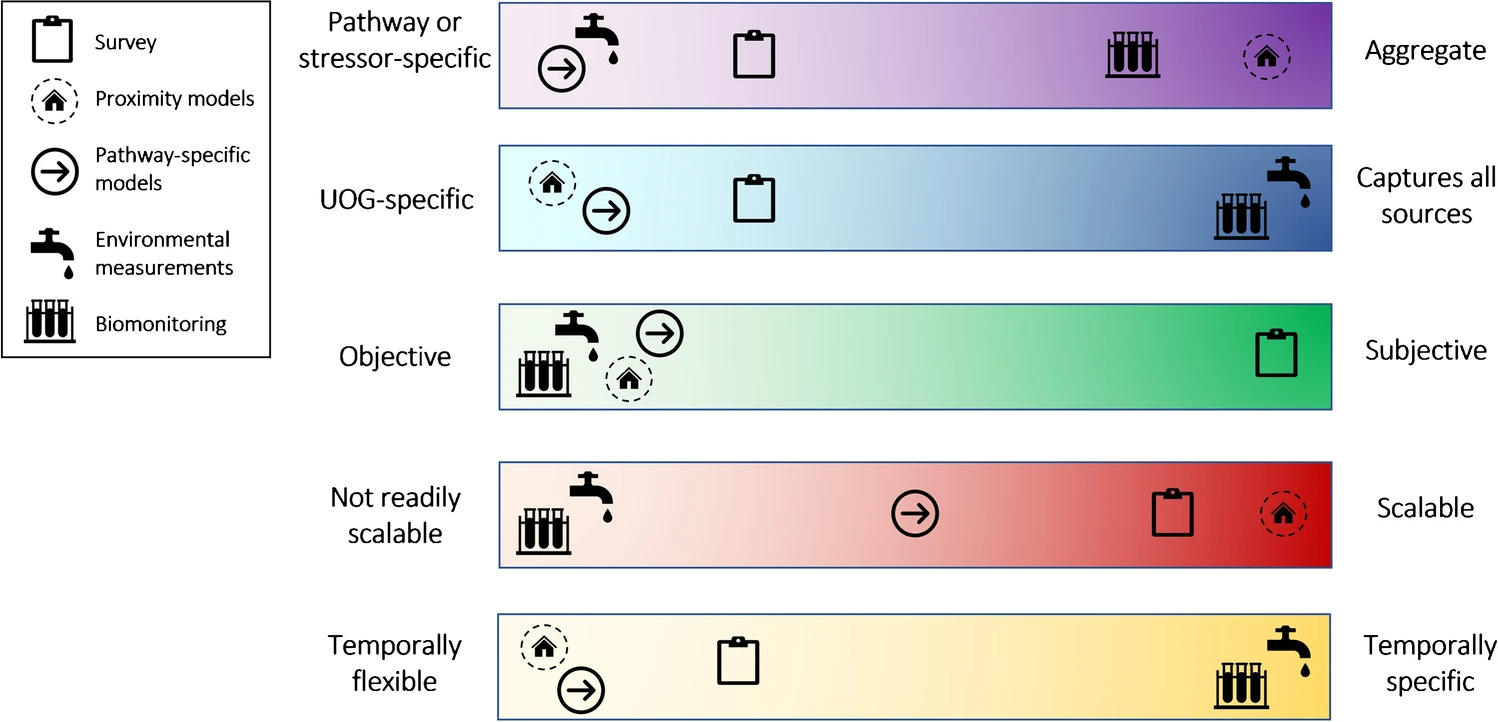
Desiree's collaboration work published on Current Environmental Health Reports, titled "Assessing Exposure to Unconventional Oil and Gas Development: Strengths, Challenges, and Implications for Epidemiologic Research". Epidemiologic studies have observed elevated health risks in populations living near unconventional oil and gas development (UOGD). This work discusses strengths and limitations of UOG exposure assessment approaches used in or available for epidemiologic studies, emphasizing studies of children’s health outcomes.
Congratulations, Desiree!
Nina successfully defends her doctoral dissertation!
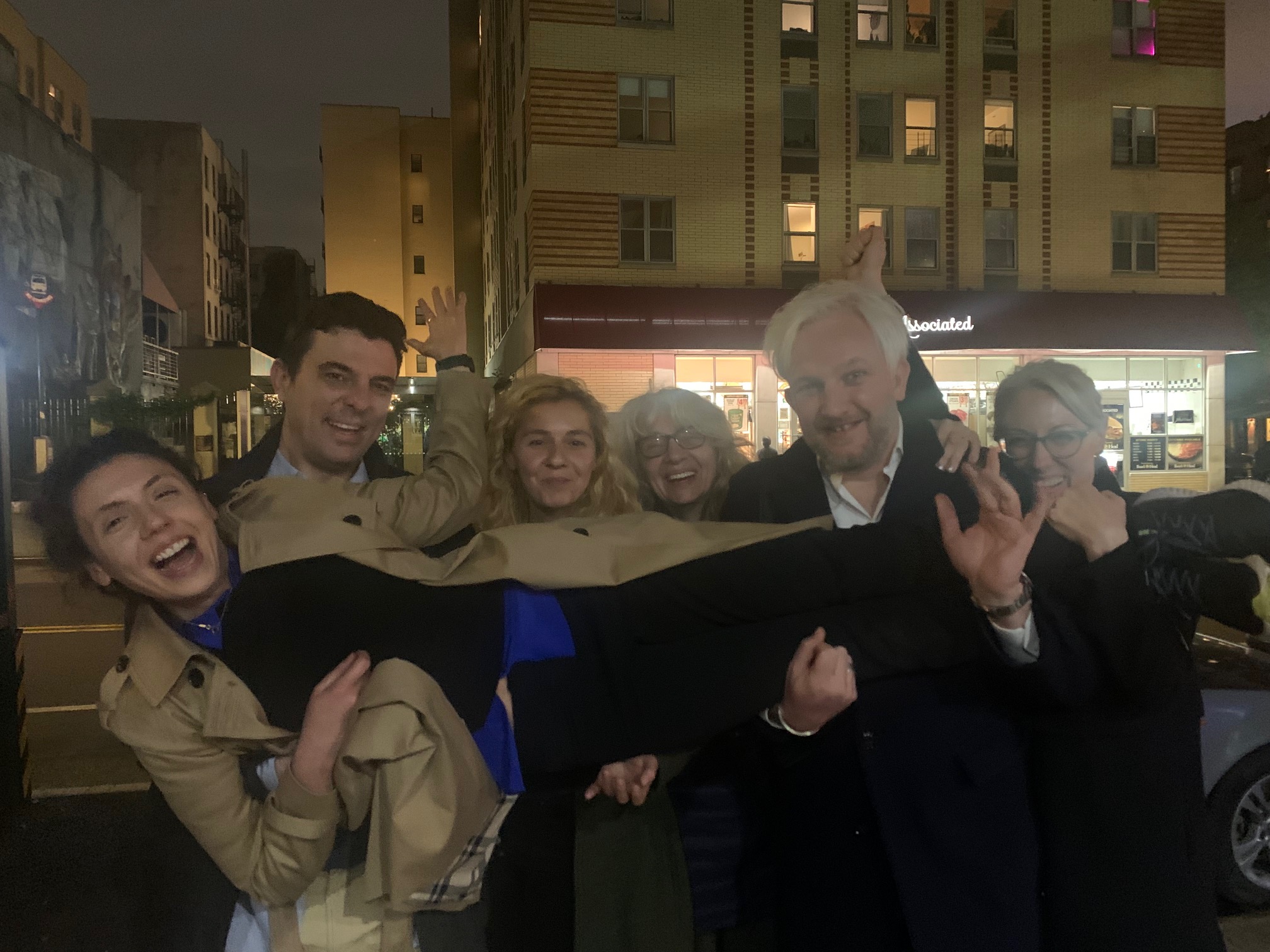
Congratulations, Dr. Nina Janković!
Desiree receives the 2022 Frank E. Perkins Award for Excellence in Graduate Advising
The Frank E. Perkins Award for Excellence in Graduate Advising is given each year to a professor from each school at MIT who, as a graduate student advisor, demonstrates unbounded compassion and dedication towards students. The award is named in honor of Frank E. Perkins, Dean of the Graduate School from 1983-95.
Congratulations, Desiree!
Plata Group engaged in MCSC Climate and Sustainability Scholars Program
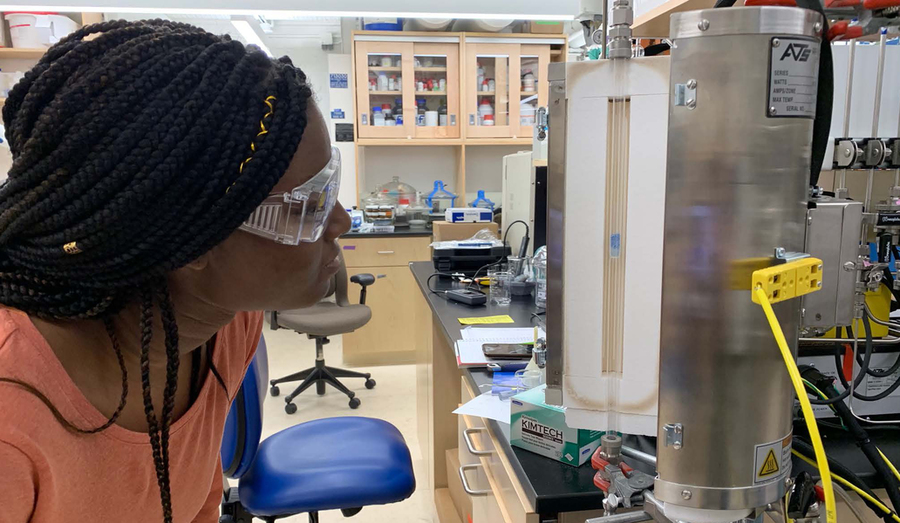
MIT student Stacy Godfreey-Igwe (pictured) is working in the Plata Lab at MIT. (Photo: Rebecca Brenneis)
Tackling the climate crisis is central to MIT. Critical to this mission is harnessing the innovation, passion, and expertise of MIT’s talented students, from a variety of disciplines and backgrounds. To help raise this student involvement to the next level, the MIT Climate and Sustainability Consortium (MCSC) recently launched a program that will engage MIT undergraduates in a unique, year-long, interdisciplinary experience both developing and implementing climate and sustainability research projects.
The MCSC Climate and Sustainability Scholars Program, open to rising juniors and seniors from all majors and departments, is inspired by MIT’s SuperUROP program. Students will enroll in a year-long class while simultaneously engaging in research. Research projects will be climate- and sustainability-focused and can be on or off campus. The course will be initially facilitated by Desiree Plata, the Gilbert W. Winslow Career Development Professor in Civil and Environmental Engineering, and Elsa Olivetti, the Esther and Harold E. Edgerton Associate Professor in Materials Science and Engineering and MCSC co-director. Check out the full story here .
Nicolette Receives NSF Graduate Research Fellowship
The NSF Graduate Research Fellowship program (GRFP) recognizes and supports outstanding graduate students in NSF-supported science, technology, engineering and mathematics disciplines, who are pursuing research-based master’s and doctoral degrees at accredited United States institutions. As the oldest graduate fellowship of its kind, the GRFP has a long history of selecting recipients who achieve high levels of success in their future academic and professional careers. The reputation of the GRFP follows recipients and often helps them become life-long leaders that contribute significantly to both scientific innovation and teaching. Past fellows include numerous Nobel Prize winners, former U.S. Secretary of Energy, Steven Chu, Google founder, Sergey Brin and Freakonomics co-author, Steven Levitt.
Congratulations to Nicolette!! Check out the full story here .
Plata Lab's work on removal of ambient methane is featured by Wired

PHOTOGRAPH: GETTY IMAGES
The magazine WIRED reported Plata Lab's recent work on methane removal from the ambient air. By combining zeolite and copper, we are able to trap and destroy methane, one of the most potent greenhouse gases. Check out the story in the article "It Might Be Time to Take Methane Removal Seriously"!
Boya, Nicholas, Glen, Yunpo, Rebecca, Austin, and Andrew's work published on Environmental Science: Processes & Impacts
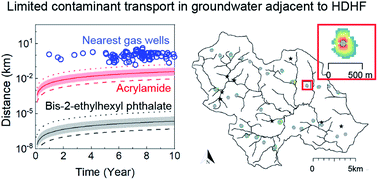
Boya, Nicholas, Glen, Yunpo, Rebecca, Austin, and Andrew's work published on Environmental Science: Processes & Impacts, titled "Groundwaters in Northeastern Pennsylvania near intense hydraulic fracturing activities exhibit few organic chemical impacts". This work illustrates that a large sampling of groundwater wells in Northeastern Pennsylvania have not been substantially contaminated with hydrophobic organic contaminants spanning a spectrum of volatilities (volatile organic, gasoline-, or diesel-range organic compounds) even after a decade of intense hydraulic fracturing activity. The reasons for this can include the relatively protective nature of groundwater flow in the area, long transport times of sorption-retarded chemicals, and a lack of systematic chemical releases from oil and gas well operations. Nevertheless, accidental chemical releases are commonly documented, albeit with limited specificity.
Congratulations to Boya, Nicholas, Glen, Yunpo, Rebecca, Austin, Andrew, and Desiree!!
Desiree jointly taught class on "Renew, Reuse, Recycle"
MIT Engineering students are getting onboard with real-world on-board solutions to climate change. They are designing a new reusable recyclable cup for Delta under the guidance of Chemical Engineering Professor Brad Olsen and Civil and Environmental Engineering Professor Desiree Plata, who joined forces to create this new capstone design class.
Rebecca's work on methane oxidation using earth-abundant catalyst featured in MIT NEWS!
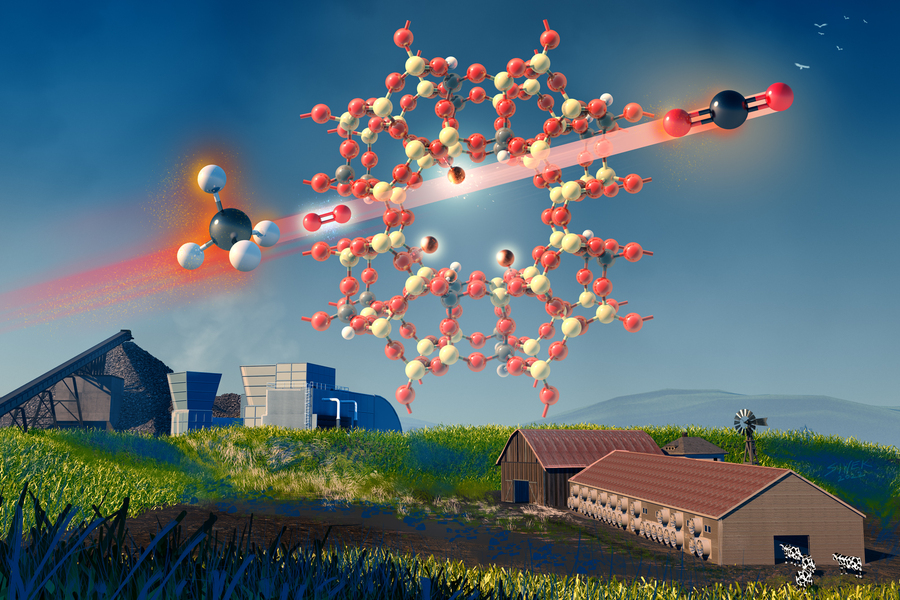
Methane is a far more potent greenhouse gas than carbon dioxide, and it has a pronounced effect within first two decades of its presence in the atmosphere. In the recent international climate negotiations in Glasgow, abatement of methane emissions was identified as a major priority in attempts to curb global climate change quickly. Now, the Plata Lab has come up with a promising approach to controlling methane emissions and removing it from the air, using an inexpensive and abundant type of clay called zeolite.
Check out the News here !
Boya, Yunpo, Austin, Nicolette, Lukas, and Rebecca's collaboration work published on Environmental Science and Technology
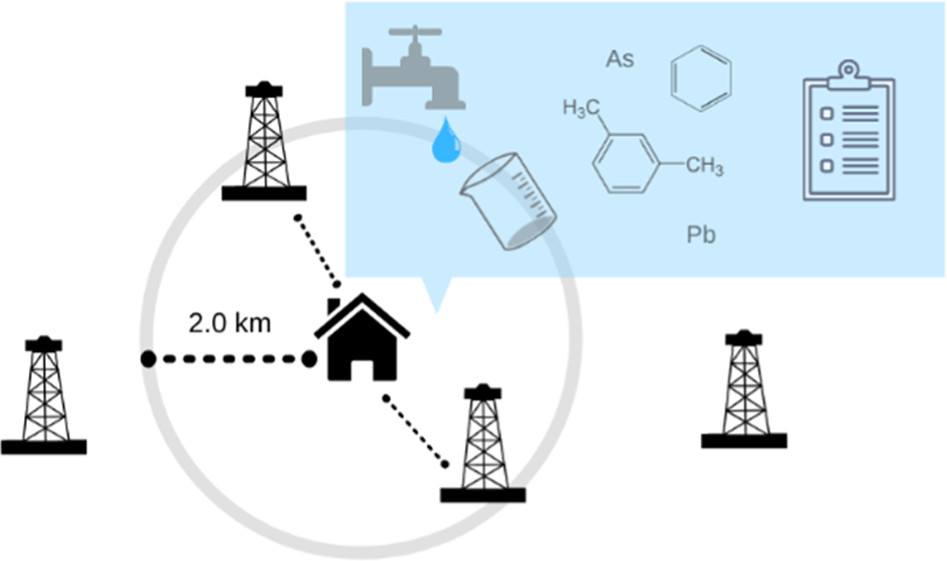
Boya, Yunpo, Austin, Nicolette, Lukas, and Rebecca's collaboration work published on Environmental Science and Technology, titled "Assessing Unconventional Oil and Gas Exposure in the Appalachian Basin: Comparison of Exposure Surrogates and Residential Drinking Water Measurements". Health studies report associations between metrics of residential proximity to unconventional oil and gas (UOG) development and adverse health endpoints. We investigated whether exposure through household groundwater is captured by existing metrics and a newly developed metric incorporating groundwater flow paths. The results showed that correlations between inorganic chemicals and metrics were limited (all |ρ| ≤ 0.28). This result may indicate that UOG-related water contamination occurs rarely/episodically, more complex metrics may be needed to capture drinking water exposure, and/or spatial metrics in health studies may better reflect exposure to other stressors.
Congratulations to Boya, Yunpo, Austin, Nicolette, Lukas, Rebecca, and Desiree!!
Rebecca, Eric, and Wenbo's work published on ACS Environmental Au
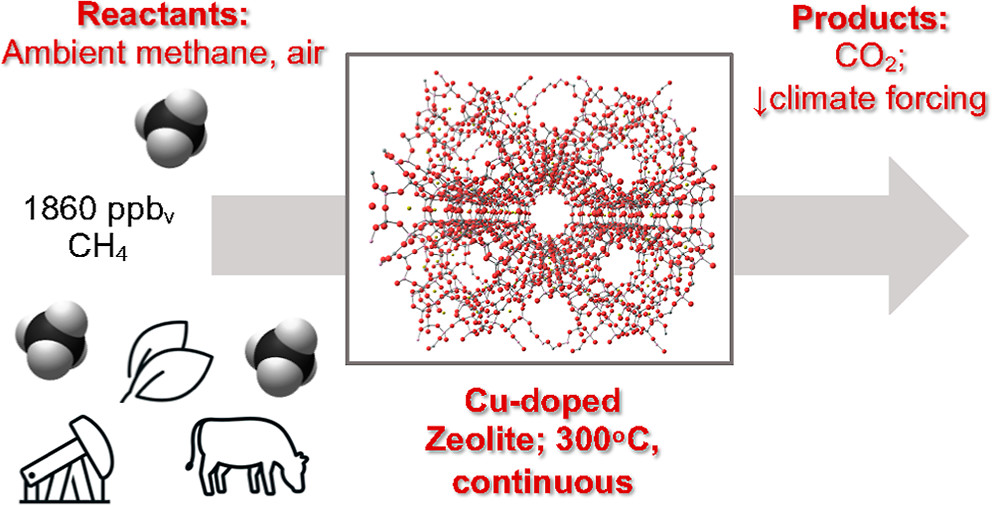
Rebecca, Eric, and Wenbo's work published on ACS Environmental Au, titled "Atmospheric-and Low-Level Methane Abatement via an Earth-Abundant Catalyst". Climate action scenarios that limit changes in global temperature to less than 1.5 °C require methane controls, yet there are no abatement technologies effective for the treatment of low-level methane. This work describes the use of a biomimetic copper zeolite capable of converting atmospheric- and low-level methane at relatively low temperatures (e.g., 200–300 °C) in simulated air. Depending on the duty cycle, 40%, over 60%, or complete conversion could be achieved. Improved performance at longer activation was attributed to active site evolution, as determined by X-ray diffraction. The conversion rate increased over a range of methane concentrations (0.00019–2%), indicating the potential to abate methane from any sub-flammable stream. Finally, the uncompromised catalyst turnover for 300 h in simulated air illustrates the promise of using low-cost, earth-abundant materials to mitigate methane and slow the pace of climate change.
Congratulations to Rebecca, Eric, Wenbo, and Desiree!!
Yunpo, Nathalie, Rebecca, and Boya's work published on Environmental Science and Technology
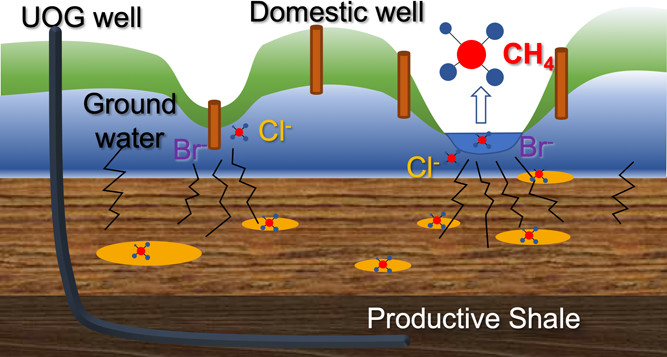
Yunpo, Nathalie, Rebecca, and Boya's Work was published on Environmental Science and Technology, titled "Groundwater Methane in Northeastern Pennsylvania Attributable to Thermogenic Sources and Hydrogeomorphologic Migration Pathways". The objectives of this study were to understand the sources and migration pathways of groundwater-dissolved methane in NE PA, evaluate the potential impacts of UOG development on the groundwater methane level, and move toward better knowledge of the environmental, safety, and climatic impacts of shale gas extraction. Our analysis suggested that the high-concentration groundwater methane could have originated from shallow thermogenic methane that migrated upward into groundwater aquifers with Appalachian Basin brine. The analysis was also extended to constrain the potential contributions of UOG development to groundwater methane emissions over gas-rich shale formations.
Congratulations to Yunpo, Nathalie, Rebecca, Boya, and Desiree!!
Over 100 countries join methane pledge but China, India, Australia and Russia stay out
At the COP26 summit in Glasgow, 104 countries have signed a commitment to reduce their methane emissions by 30% between 2020 and 2030, putting oil and gas sector leakage in the spotlight. Check out the news here!
MRS Bulletin interviews Desiree on functionalization of CNTs with heteroatoms
Markus Buehler of the MIT and editor of the Impact section of MRS Bulletin interviews Desirée Plata, the Gilbert W. Winslow Career Development Associate Professor of Civil and Environmental Engineering at MIT about her group’s development of new methods toward functionalization of carbon nanotubes with heteroatoms, which enables covalent attachment, opening up a world of potential materials structures.
NOVA video features the Plata Group's work on methane mitigation
The Plata Group's work on methane mitigation is featured by PBS NOVA. Desiree explains how methane is emitted to the atmosphere from natural sources and introduces the catalytic ambient air conversion technology being developed by our group to fight methane's climate impact.
MSRP alumna Nathalie Thelemaque highlighted in CEE News
Plata group alumna Nathalie Thelemaque, who participated in the MIT Summer Research Program (MSRP), is highlighted in the CEE News for her pursuit of academic trajectory beyond MIT. Check out the news here!
Desiree Plata and Justin Steil win Edgerton Faculty Award
These CEE and DUSP faculty members recognized for excellence in leadership, service, and impactful work tackling environmental and social justice issues. Check out the news here!
Congratulations to Desiree!!
Nth Cycle Secures $3.2 Million in Seed Funding to Scale Technology for Battery Recycling, Sustainable Mining
Nth Cycle, a start-up company founded by Dr. Megan O’Connor, one of the first grads of the Plata group, is the maker of a recycling technology that extracts critical metals from batteries, e-waste, low-grade ore, and mine tailings so they can be reused to make new clean energy products. The company recently announced that it secured $3.2 million in funding from investors led by climate tech venture capital firm Clean Energy Ventures. Check out the news here!
Congratulations to Megan!!
Eric and Wenbo's paper published on MRS Bulletin
Eric and Wenbo's work titled "Oxygen-functionalized alkyne precursors in carbon nanotube growth" was published on MRS Bulletin. Their work evaluated an in situ functionalization technique of carbon nanotubes (CNTs) using oxygen-containing alkyne precursors. The results supported the universality of alkyne-promoting chemistries and delineated the limits of stable, oxygen-bearing alkynes to support point-directed functionalization schemes.
Congratulations to Eric, Wenbo and Desiree!!
Plata group becomes part of the MIT Climate and Sustainability Consortium (MCSC)
The MIT Climate and Sustainability Consortium is to "vastly accelerate the implementation of large-scale, real-world solutions to meet this challenge, and to inspire transformative climate progress across industries – and across the globe." The Plata lab is now contributing to this exciting process!
Desiree moderated the low-carbon fuels panel at MITEI’s first virtual Annual Research Conference
Desiree highlighted the urgency and difficulty of transitioning today’s systems that require fossil energy, saying, “There’s a challenge on the table to try and meet those needs while minimizing carbon—in other words, moving to low-carbon fuels." Check out the details here.
Andrew and Brian's Collaboration Work Published On Combustion and Flame
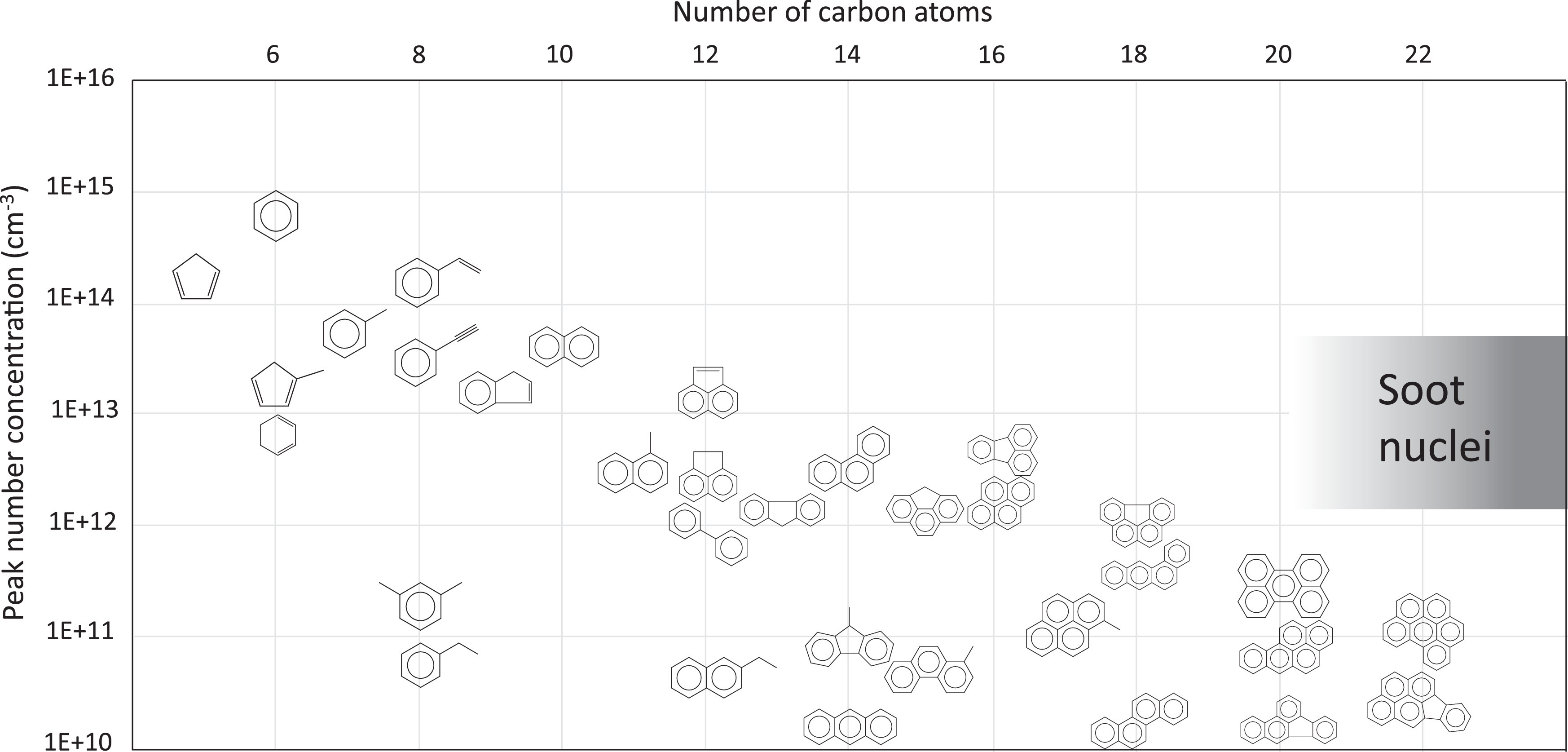
Andrew and Brian's collaboration work with Prof. Gomez Group at Yale University was published on Combustion and Flame, titled "Small Aromatic Hydrocarbons Control the Onset of Soot Nucleation". The gas-to-particle transition is a critical and hitherto poorly understood aspect in carbonaceous soot particle formation. Polycyclic Aromatic Hydrocarbons (PAHs) are key precursors of the solid phase, but their role has not been assessed quantitatively probably because, even if analytical techniques to quantify them are well developed, the challenge to adapt them to flame environments are longstanding. This work presents simultaneous measurements of forty-eight gaseous species through gas capillary-sampling followed by chemical analysis and of particle properties by optical techniques. The principal finding is that only one- and two-ring aromatic compounds can account for soot nucleation, and thus provide the rate-limiting step in the reactions leading to soot.
Congratulations to Andrew, Brian, and Desiree!!
Yunpo and Boya's Collaboration Work Published On Water Resources Research
Yunpo and Boya's collaboration work with Prof. Saiers Group at Yale University was published on Water Resources Research, titled "Evaluating Domestic Well Vulnerability to Contamination From Unconventional Oil and Gas Development Sites". The rapid expansion of unconventional oil and gas development (UD), made possible by horizontal drilling and hydraulic fracturing, has triggered concerns over groundwater contamination and public health risks. To improve our understanding of the risks posed by UD, this work develops a physically based, spatially explicit framework for evaluating groundwater well vulnerability to aqueous phase contaminants released from surface spills and leaks at UD well pad locations.
Congratulations to Yunpo, Boya, and Desiree!!
Ask MIT Climate Interviewed Desiree on Low-Carbon Solutions
Do we have the technology to go carbon neutral today?
We still need new breakthroughs to decarbonize many parts of our modern economy, especially if we don’t want to drive up the price of energy and goods. But we can make real progress with today’s technology, and invest in good ideas for the next generation of low-carbon solutions. Check out the full interview article on MIT Climate Portal.
Brian's Paper Published On Environmental Science and Technology
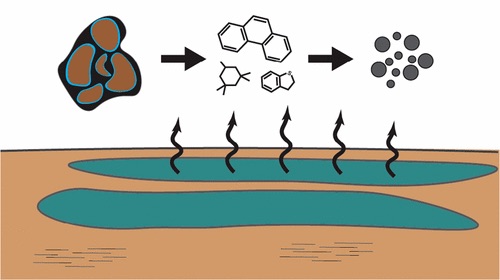
Brian's work on analysis of oil sand (OS) development impacts on secondary organic aerosol (SOA) formation was published on Environmental Science and Technology titled "Waste Containment Ponds Are a Major Source of Secondary Organic Aerosol Precursors from Oil Sands Operations". His work simulated OS extraction and used comprehensive two-dimensional gas chromatography to quantify and characterize direct air emissions, bitumen froth, residual wastewater, and tailings components, ultimately enabling fate modeling of over 1500 chromatographic features simultaneously.
Congratulations to Brian and Desiree!!
Riley's Collaboration Work Published On The Journal of Physical Chemistry Letters
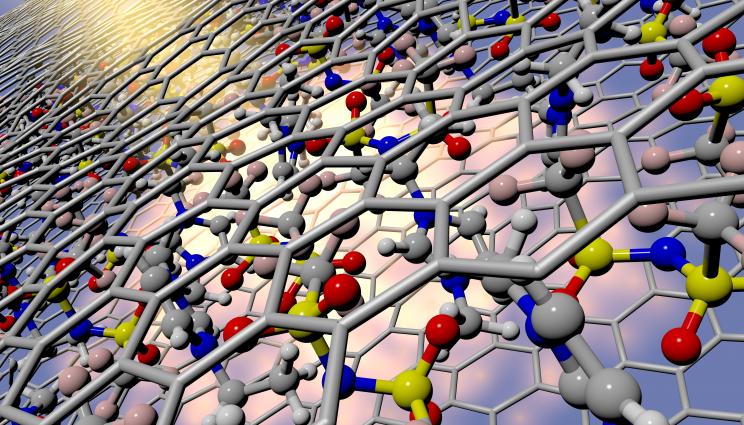
Riley's collaboration work with Lawrence Livemore National Laboratory was published on The Journal of Physical Chemistry Letters, titled "Structural Anomalies and Electronic Properties of an Ionic Liquid under Nanoscale Confinement". Featured on LLNL News: Diving into the structure of molten salts in tight spaces.
Congratulations to Riley and Desiree!!
